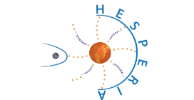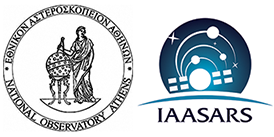This is a map of the HESPERIA Partners
The Belgian Institute for Space Aeronomy (IASB-BIRA) is a Belgian scientific institution created in 1964 and depends on the Belgian Federal Science Policy Office. IASB-BIRA focuses on the study of scientific issues within the upper atmosphere and outer space within the framework of physics and chemistry.
The IASB-BIRA Space Physics Division has participated in many space environment projects in the past years. Through those projects the Division has acquired a significant know-how in the space environment, in the construction and usage of measurement data bases, and in the creation and operation of processing tools and models. Division personnel participating in HESPERIA have expertise in the energetic particle environment (solar energetic particles, Earth’s radiation belts, galactic cosmic rays).
The cosmic ray group of the Physics Departement at the University of Bern, has a long-standing expertise in the analysis of solar cosmic ray events and in the simulation of cosmic ray transport in near-Earth space. It is also recognized for the development and application of software packages based on Geant4 to cosmic ray transport in planetary magnetospheres and atmospheres and to evaluate the response of cosmic ray detectors.
Recent applications include the computations of the ionisation and the radioactive dosage in the Earth's atmosphere caused by galactic and solar cosmic rays.
The group operates three neutron monitors in Switzerland. Two neutron monitors of type IGY and NM64 are located at high altitude at Jungfraujoch, and one special neutron monitor is in operation in Bern.
ISNet is an SME founded in 2002. ISNet started with the design and production of Meteorological Systems, data acquisition systems and database systems for airports, scientific experiments and educational institutions (Universities, Technical Universities etc). Its products are installed in airports, universities, and government organizations and agencies.
ISNet has wide experience in hardware development and the production of embedded systems, acquisition systems and computational systems. It also holds expertise in software development of real time applications, data mining and data manipulation applications, database design and administering, web server design, administering and development. It participates in the FP7/Neutron Monitor Database (NMDB), and the ESA SSA project and in an number of national projects.
ISNet designed, developed, implemented and currently supports the GLE Alert Plus forecasting solution. It has been largely involved in projects that require a database storage of scientific data, registration of data from various sensors and presentation of such data in many different formats.
Founded in 1975, the University of Malaga (UMA) is a research & education institutions located in southern Spain. It has 2.400 researchers (27% of them in Experimental and Health Sciences and 18% in Engineering). UMA offers 51 degrees from 18 faculties to over 36.400 students (among them 25% in Engineering and 14% in Experimental and Health Sciences). The most active and highly interconnected research fields with entrepreneurship are Information Technologies, and Environment and Renewable energies (roughly 70% of the total). The UMA has 81 Departments, one of which is the Department of Languages and Computer Sciences (LCC).
The Space Weather Group of UMA/LCC, led by Professor Marlon Núñez, has a solid experience in the development of models for predicting space weather events. The main research topics are the prediction of Solar Energetic Proton (SEP) events and the automatic recognition of active regions from images. The most recent field of research is the prediction of arrival times of shocks at distances up to 9 AU.

 hesperia [dot] info [at] hesperia-space [dot] eu
hesperia [dot] info [at] hesperia-space [dot] eu










